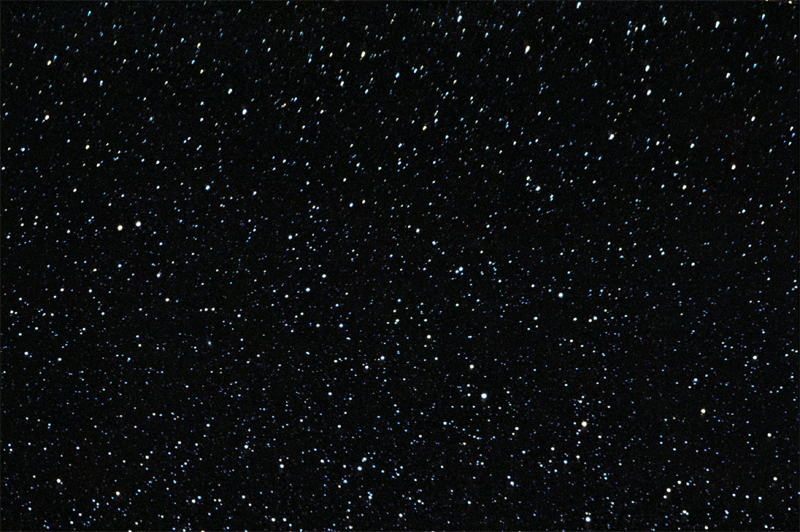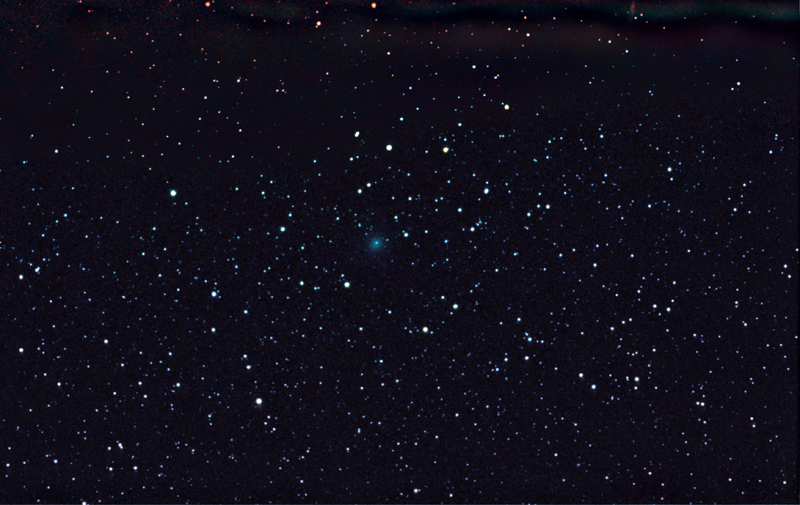
Comet 6P/ d'Arrest, August 30, 1995.
10 minutes exposure, Fujichrome 400 film.
300mm f/2.8 Canon lens.
I missed the 1989 return, however the 1995 1995 return of comet d'Arrest was very favourable, bettered only by the exceptional return of 1976. In September of 1995, the comet passed within 0.5 AU of the Earth; as close as it could come following a close approach to Jupiter during the early 1980's which increased the perihelion distance, preventing another extreme close approach as in 1976. As a result of this, I planned to make as many observations as possible. Although things did not go as well as I had hoped, I was still able to make a number of observations and photographs.
My first observation was on June 27, when the comet was a small, moderately condensed object of magnitude 9.8. From there the comet brightened steadily until it peaked at magnitude 7.3 on August 3.

During August and September the comet was quite bright and well placed for viewing from the southern hemisphere. It reached a peak magnitude of 7.3 around August 20, while the coma became very large as the comet passed close to the Earth, reaching 14 arc minutes on September 21.
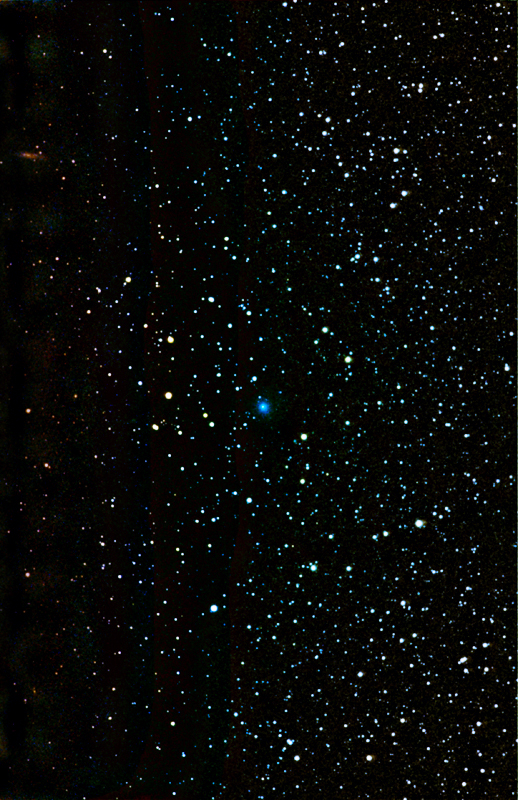
The large object on the upper left is the bright spiral galaxy NGC 253.
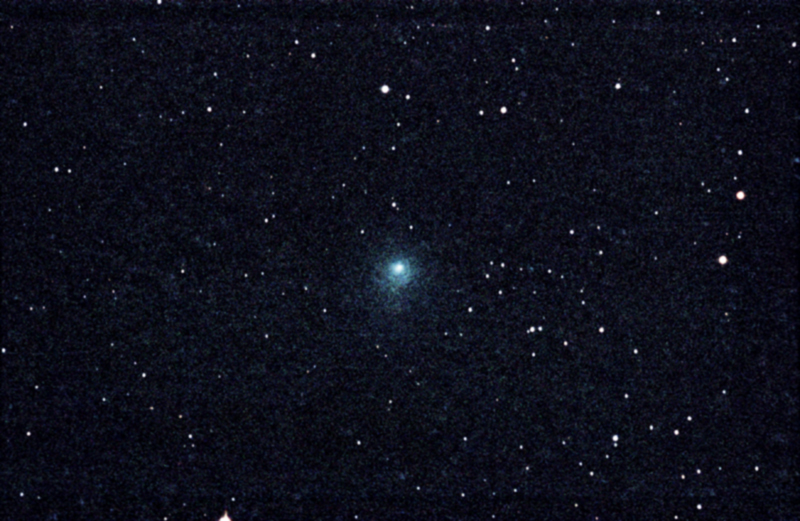
On August 30, the 7.5 magnitude comet passed between 2 moderatly faint galaxies; the 12.6 magnitude IC 1558, and the 14.3 magnitude IC 1553. This made an interesting sight in a 17.5" telescope. I tried to photograph the two however the rapid motion of the comet meant that exposures had to be kept short to aviod excessive trailing, which resulted in the galaxies appearing very faint in the photographs. In the photograph below, IC 1558 is indicated by the circle on the left and IC 1553 by the circle to the lower right. It is interesting to note that although IC 1558 is 1.5 magnitudes brighter, notice how much brighter IC 1553 appears. This is because it is a much smaller galaxy so the light is more concentrated, resulting in a higher surface brightness. Also note that even with just a 20 minute exposure, the comet has trailed noticeably. Where were CCD's when we needed them!
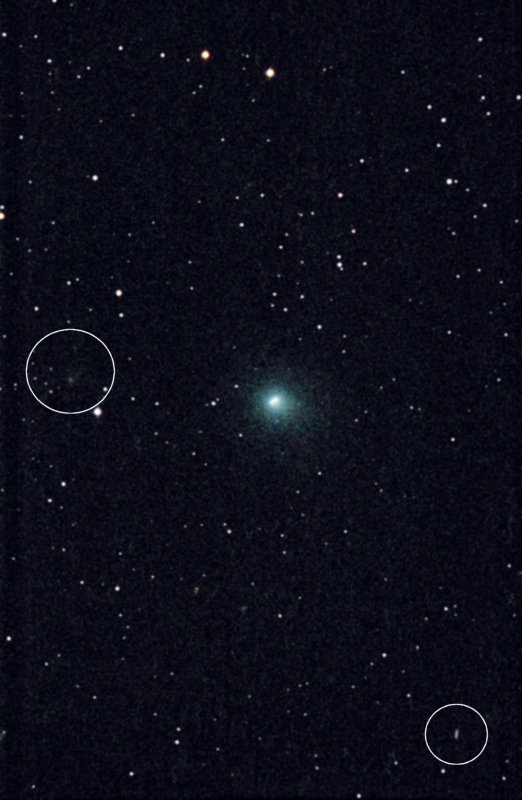
Even though CCD's were out of the reach of amatures in 1995, we do have scanners and computers available today; and through the magic of Photoshop it is possible to remove the trailing of the comet!!
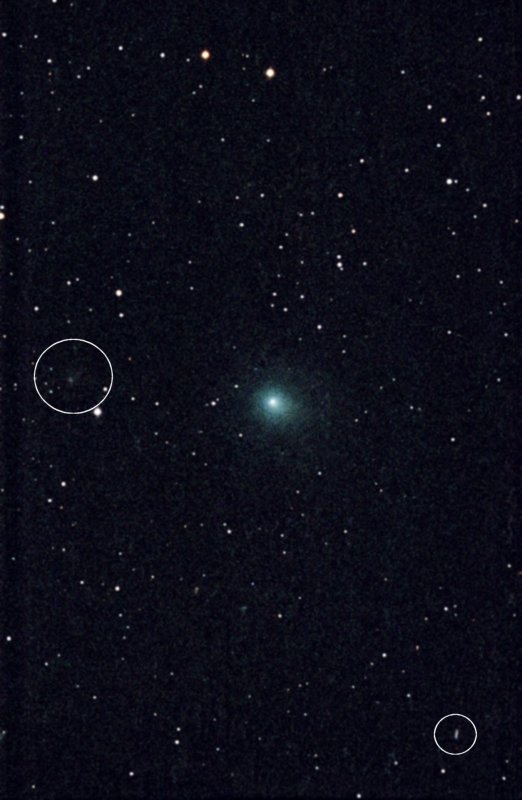
The comet itself shows a bright central condensation with a large, faint outer coma, which on this night was 12' across visually. The outer coma does not appear to be symetrical, giving the hint of a tail heading towards the lower right.
The following night, the comet and the galaxy were still visible in the same field. Again the galaxy is indicated by the circle.
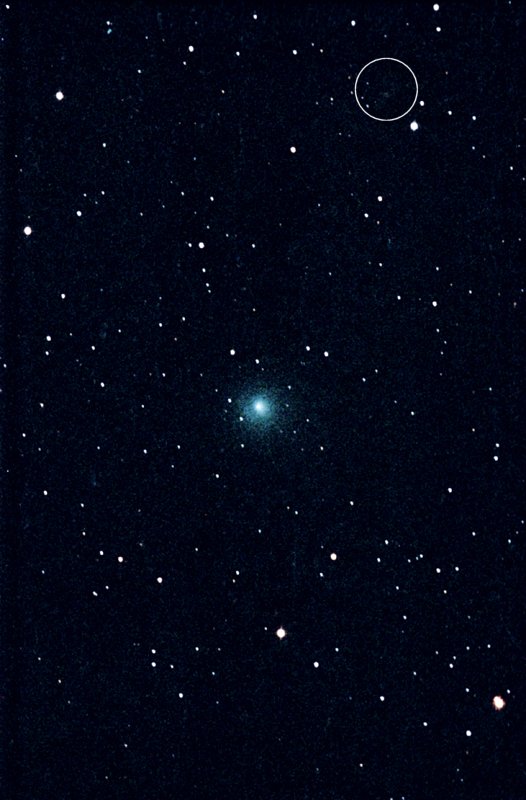
After the end of August, the comet started to fade steadily and by the end of September was down to magnitude 8.8. The coma remained very large however, being still 12' across visually on September 30.
During October, the steady fading continued, with the comet being magnitude 9.7 by October 24.
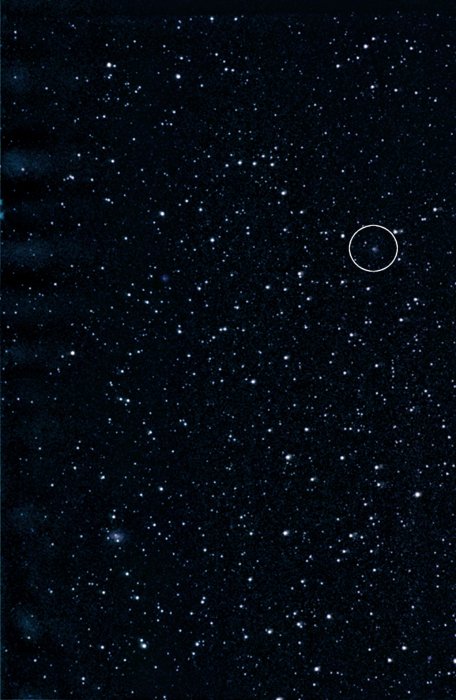
The comet is indicated by the circle. The bright galaxy to the lower left is NGC 300.
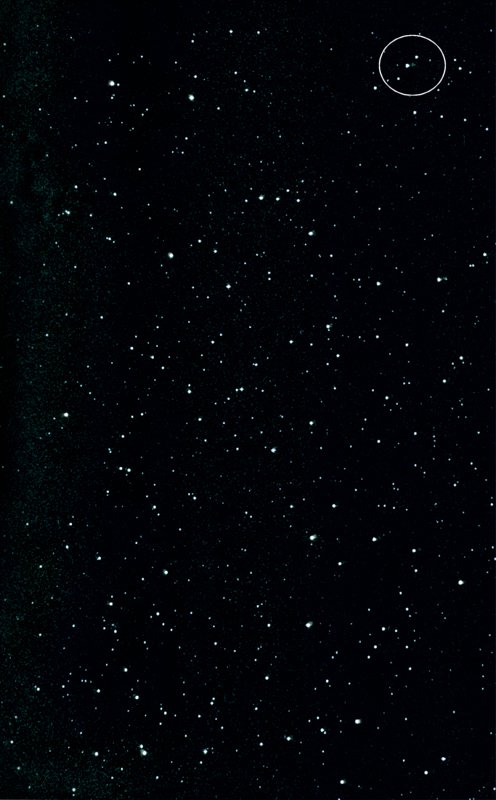
My final observation of comet d'Arrest was on November 22, when it was still an easy object in a 17.5" telescope at magnitude 10.6. The coma was now only 6' across and very diffuse.
